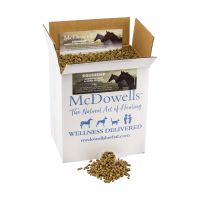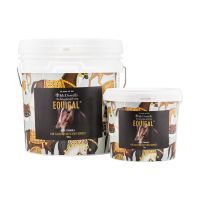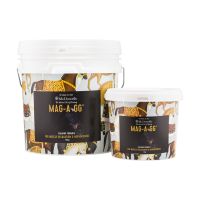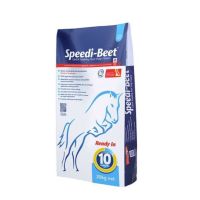FEEDING YOUR HORSE...NATURALLY!
A good diet is not complicated to put together and often “the simpler, the better”. Complexities arise from overfeeding, over-mineralising of so called "safe" vitamin supplements that often put a strain on the kidneys and liver, along with a general mixing and matching of a variety of complete feeds as competing brands argue their case.
Feeds should be from a whole source, with vitamins and minerals supplied by a broad range of whole grasses in either dried hay form or fresh grass, (supplied in either dried hay form or fresh grasses), whole grains like barley and oats, as well as trace minerals supplied by herbs, rock salt and kelp.
There are many whole-feed concentrates on the market, with some beneficial in the general scheme of things, however, unless you are supplementing a major deficiency, it is best to maintain health with herbs as the main source of essential vitamins and minerals on a long-term basis in conjunction with a very simple feed program.
This is especially true for the insulin resistance horse, which require a very specific herbal and management program.
Like modern day diets which all come out of a packet, we have lost touch with our natural cravings. Often horse owner’s biggest complaints regarding their horse’s diet is that they won’t eat herbs or have lost their appetite in general.
Preventative Maintenance is the first, and the best place, to start in ensuring good health. The herbs discussed below can form the basis of a program for bringing on young stock so that they have much healthier, more mature and more elastic ligaments and bones.
During autumn ( and of course spring), you have to be extra careful about pastures . During this season the grass begins to stop growing as the temperature falls, with one last burst of energy before winter as the grass releases its final shoots of the year. As a result, the natural sugar of the grass accumulates in the stem. Horses love these autumn shoots because of their sweet taste and due to them being easy to digest. However, excessive sugar can lead to further complications of your horse’s gut.
Therefore, it is advised that you limit their access to autumn grass if you have a Autumn flush.
If you need to hard feed, I have provided my basic diet below. This can of course vary depending on demands, general health and energy requirements.
I have included my EquiHemp pellet in this example, and you can add extra herbs as well as other whole feeds if required as described below.
FEED PROGRAM (Basic)
|
Horse weight |
300kg |
500kg |
700kg |
|
Equihemp |
100g |
200g |
300g |
|
Salt |
15g |
20g |
30g |
|
Mag GG or EquiCal |
30g |
40g |
50g |
|
Wheaten and Lucerne Chaff |
200g |
250g |
300g |
|
Speedibeet |
500g |
600g |
800g |
|
Rhodes grass hay |
6kg |
10kg |
14kg |
- Based on 2% body weight roughage
- Moderate exercise
- Gelding
- Must be modified to suit individual horses needs and type of roughage available.
Feeding rates to be adjusted to energy expenditure and weight management requirements.
This whole regime is aimed at metabolic restoration.
The ratio of Ca and P is always important when looking at horse rations. A ratio of two parts Ca: one part P is ideal, with a range of 1:1 to 6:1 being acceptable. Because phosphorous competes with Ca for absorption in the gut, total diets that are less than 1:1 or contain more P than Ca should be avoided.
A good guide is that brown /white feeds are high in phosphorus while green feeds contain calcium.
Speedi beet as the calcium source and green pastures- sometimes lucerne as well in appropriate situations.
Vit E is also important and is best provided by fresh green grass.
Equical provides chelated calcium as well as magnesium in those diets that may be out of balance.
For Oxalate pastures you need to feed away from the pasture, ensuring that Calcium uptake is normal. Calcium binding occurs when grazing and the grass is continually in the GIT. Feeding Magnesium helps. Chelated Calcium such as our Equical. This will help, however you are best to feed away from the pasture for best management and therefore require less of these mineral supplements.
Oats and Millet
Oats and Millet both contain especially high levels of organic silica compounds as well as carbohydrate and many other minerals. As oats can be too hot for some situations, a daily cup of millet as a feed supplement is sufficient to ensure all the silica required to produce tough bones and to aid in recovery from injury.
Linseed
Linseed is specific for strength and elasticity of ligaments and attachment points. A cupful, (boiled and drained as too much raw linseed can be toxic), daily in a young horse's diet, as well as regular application of raw linseed oil to the legs of young horses, is the very best thing you can do for a growing horse to help avoid a life plagued by ligament injuries.
Both Millet and Linseed appear in McDowells popular Tendon and Bone formulation, which can help dramatically increase the speed of healing of injuries and prevent them from becoming chronic.
Yarrow
Yarrow is a herb that in extract form closes off blood vessels and acts as an astringent to help close up open wounds. Yarrow also stimulates bone marrow health and the production of red blood cells within the bone marrow, again supporting the healing of profound levels of damage or weakness that follow strain or injury.
Chamomile
Chamomile has many properties and helps various conditions ranging from skin and nervous system problems, to acting as an antispasmodic and a digestive aid. Chamomile is often used to treat colic, scours and other gastrointestinal disorders. The preparation in this case is prepared with 1/3 cup of Slippery Elm Bark powder mixed into a sufficient quantity of cold tea to make a paste. One dose of this paste daily over an uninterrupted 12 week course will aid healing of the lining of the gastrointestinal tract.
Rosehips
Rosehips Granules are one of the very best sources of natural Iron and Vitamin C, and also contain biotin for optimum hoof health. Rosehips play a major role in kidney rehabilitation and adrenal function, and can be used to prevent Azoturia or "tying up". Routine usage will help rehabilitate kidneys weakened by stress, and/or the regular use of electrolytes or diuretics.
Rosehips are an excellent mild blood cleanser, supporting circulatory health, adrenal health and connective tissue health.
In conclusion, it should be clear that there are a large number of simple and inexpensive ways in which herbs can be used to both supplement the diet, aid in the maturity of bones in young competition horses, and aid in resolving injury and strain occasioned by workload or injury.
Preventative programs and natural herbs should always be the first consideration.
Herbs will aid in healing and recovery from injury wherever it is found in the body. Therefore, every time you are treating a specific problem, the herbs will also seek out other areas of past or impending weakness, taking advantage of the opportunity to help resolve these without you even knowing it is going on.





